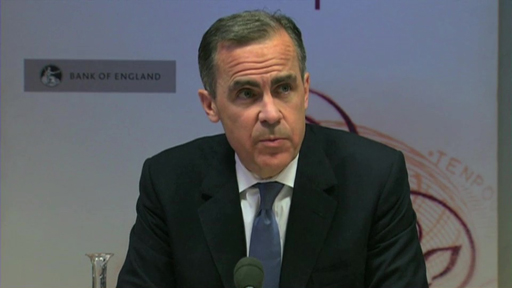4.1.5 What determines the level of interest rates?
To understand what determines the level of interest rates charged when you borrow money, you first need to understand how ‘official’ interest rates are set.
The video, which features Mark Carney, Governor of the Bank of England, sets the scene by looking at the factors taken into consideration when setting official interest rates.

Transcript
Prior to 1997, ‘official’ interest rates in the UK were determined by the UK government, usually after consultation with the Bank of England. Arrangements changed in May 1997 when the incoming Labour government passed responsibility for monetary policy and the setting of interest rates to the Bank of England to make the bank independent of political influence. This matches the arrangement in the USA and in the ‘euro zone’, where the Federal Reserve Bank and the European Central Bank respectively set official rates.
The rate set by the Monetary Policy Committee (MPC) known as the ‘Bank Rate’ is the rate at which the Bank of England will lend to the financial institutions. This, in turn, determines the level of bank ‘base rates’ – the minimum level at which the banks will normally lend money. Consequently, Bank Rate (also known as the ‘official rate’) effectively sets the general level of interest rates for the economy as a whole.
Note, though, that for individuals the rate paid on debt products will be at a margin – sometimes a very high margin – over Bank Rate and bank base rates. Indeed, one of the consequences of the financial crisis was that the margin between Bank Rate and the rate paid on debts widened sharply (except for those products whose rate was contractually linked to the Bank Rate).
Each month, the Bank of England’s MPC meets for two days to consider policy in the light of economic conditions – particularly the prospects for inflation. The MPC’s decision is announced each month at 12 noon on the Thursday after the first Monday in the month.
The prime objective is for the MPC to set interest rates at a level consistent with inflation of 2% p.a. For example, if the MPC believes inflation will go above 2% p.a. it might increase interest rates in order to discourage people from taking on debt – because if people spend less, it could reduce the upward pressure on prices. Conversely, if the MPC believes inflation will be much below 2% p.a. it might lower interest rates (also known as ‘easing monetary policy’) – people might then borrow and spend more.
However, in 2013 and 2014 the policy on the setting of official rates was modified to take greater account of the level of unemployment in the economy. First it was announced that official rates would not be raised while the rate of unemployment was above 7% of the labour force. Subsequently, following a sharp fall in unemployment towards and then below 7%, this stance was modified to one where the MPC would take account of the extent of spare capacity in the economy rather than just the rate of unemployment. The video explores this change of emphasis to the setting of official interest rates in the UK.
Official rates of interest tend to be cyclical, rising to peaks and then falling to troughs. Since 1989 the trend in the UK has been for nominal interest rates to peak at successively lower levels. Nominal rates fell to 3.5% in 2003. In 2009 they hit a record low of 0.5% and were still at this level in May 2016. This is because the Bank of England has been attempting to stimulate economic activity following the period of recession at the end of the 2000s. However, the benefit of these low nominal interest rates was not fully experienced by borrowers as the margin widened between the Bank of England’s Bank Rate and the rate charged by lenders on many of their debt products.
In November 2017 Bank Rate was raised for the first time in 10 years – from 0.25% to 0.5%. The change, although modest, was taken as a signal that future years will see higher interest rates than those experienced since the financial crisis of 2007/08.
